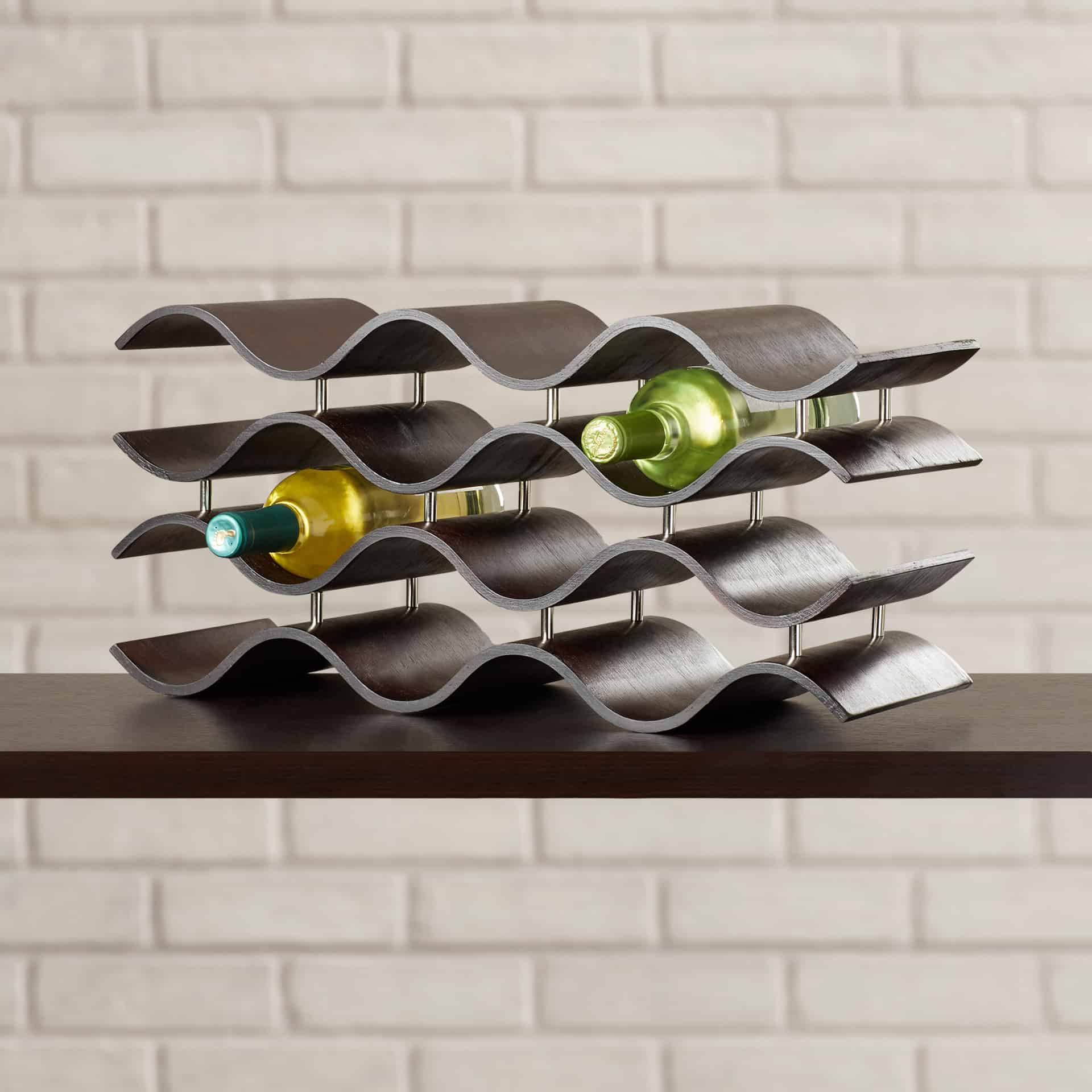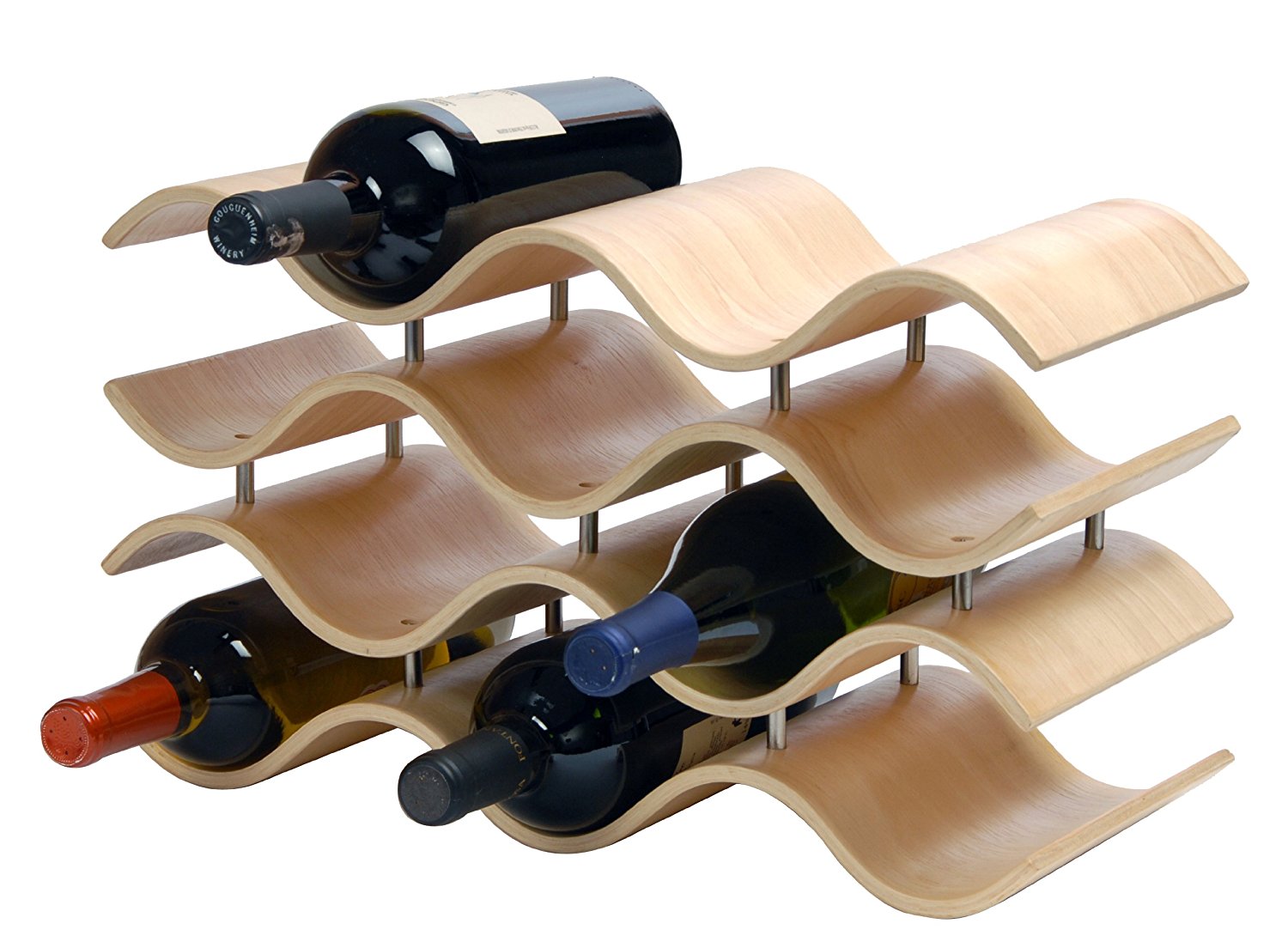Design & Aesthetics of Hanging Wine Bar Cabinets

Hanging wine bar cabinets offer a stylish and space-saving solution for wine enthusiasts. Their versatility allows them to seamlessly integrate into various home decor styles, from rustic farmhouse to sleek modern. The choice of design, materials, and storage solutions significantly impacts the overall aesthetic and functionality of the cabinet.
Five Hanging Wine Bar Cabinet Design Styles
The design of a hanging wine bar cabinet significantly influences its visual appeal and integration into a room’s overall aesthetic. Different styles cater to diverse preferences and interior design themes. The following table showcases five distinct styles, highlighting their materials, visual characteristics, and typical dimensions.
| Style | Material | Visual Characteristics | Example Dimensions (inches) |
|---|---|---|---|
| Rustic Farmhouse | Reclaimed wood (pine, oak), wrought iron | Distressed wood finish, visible wood grain, possibly with metal accents, often featuring open shelving | 48W x 12D x 36H |
| Modern Minimalist | Sleek lacquered wood (maple, walnut), brushed stainless steel | Clean lines, simple geometric shapes, often with integrated lighting, minimalist hardware | 36W x 10D x 30H |
| Traditional | Solid wood (cherry, mahogany), brass or nickel hardware | Ornate details, possibly with glass doors, rich wood tones, classical proportions | 42W x 14D x 36H |
| Industrial | Metal (steel, iron), reclaimed wood accents | Exposed metal framework, raw or slightly distressed finish, combination of wood and metal elements | 60W x 16D x 40H |
| Contemporary | High-gloss lacquered wood, glass, chrome or stainless steel | Sleek and sophisticated design, often with integrated lighting, use of reflective surfaces | 40W x 12D x 32H |
Three Unique Hanging Wine Bar Cabinet Designs
The functionality and aesthetic appeal of a hanging wine bar cabinet can be greatly enhanced by incorporating diverse storage solutions tailored to individual needs.
Hanging wine bar cabinet – Below are three unique designs illustrating different approaches to storage and organization:
- Design 1: The “Entertainer’s Delight”: This design prioritizes accessibility and ease of use. Features include multiple bottle racks, easily accessible shelves for glasses and bar tools, and a pull-out drawer for cocktail napkins and other essentials. The cabinet might incorporate a small built-in ice bucket for added convenience.
- Design 2: The “Collector’s Showcase”: This design emphasizes the display of the wine collection. It features a combination of glass-front cabinets to showcase prized bottles, along with traditional bottle racks for everyday wines. Subtle lighting enhances the visual appeal of the collection.
- Design 3: The “Space-Saving Solution”: This design is ideal for smaller spaces. It utilizes vertical space efficiently with slim bottle racks and narrow shelves. The design may incorporate a fold-down countertop for serving, maximizing functionality without sacrificing space.
Modern Hanging Wine Bar Cabinet: A Visual Description
Imagine a sleek, rectangular cabinet crafted from dark walnut wood with a high-gloss finish. The cabinet hangs elegantly against a white wall, its clean lines contrasting sharply with the surrounding space. Soft, integrated LED lighting subtly illuminates the interior, casting a warm glow on the bottles within. The interplay of light and shadow creates a dramatic effect on the cabinet’s polished surface, highlighting its sophisticated design. The dark wood absorbs some light, while the high-gloss finish reflects ambient light, adding depth and visual interest. The chrome accents on the handles and hinges further contribute to the modern aesthetic, creating a feeling of refined elegance that enhances the room’s ambiance. The cabinet’s minimalist design allows it to serve as a focal point without overwhelming the space, adding a touch of sophistication to the room.
Functionality and Practical Considerations

Choosing the right hanging wine bar cabinet hinges on understanding its functionality and how it integrates into your space. Beyond aesthetics, practical aspects like storage capacity, accessibility, and ease of use are crucial. This section will explore different mechanisms, layout integration, and the installation process.
Comparison of Hanging Wine Bar Cabinet Mechanisms
Three common mechanisms for hanging wine bar cabinets offer distinct advantages and disadvantages. Pull-out shelves provide easy access to bottles, while rotating racks maximize storage in a compact space. Fixed shelves, while simpler, may limit accessibility depending on the cabinet’s depth and placement.
- Pull-out Shelves: Pros: Excellent accessibility to all bottles; easy to load and unload. Cons: Requires more cabinet depth for each shelf; may not be suitable for extremely narrow spaces. Example: A cabinet with three pull-out shelves could easily hold 30-40 bottles, but would need significant depth.
- Rotating Racks: Pros: Maximizes storage capacity in a small footprint; visually appealing. Cons: Access to bottles on the inner sections can be less convenient; more complex mechanism might be more prone to malfunction. Example: A rotating rack can hold twice as many bottles as a similarly sized cabinet with fixed shelves.
- Fixed Shelves: Pros: Simple design; inexpensive; easy to install. Cons: Accessibility to bottles on the back shelves can be challenging; limits the number of bottles you can store efficiently. Example: A shallow cabinet with fixed shelves might only hold a dozen bottles comfortably.
Integration of Hanging Wine Bar Cabinets into Kitchen and Dining Room Layouts
Careful planning ensures your wine cabinet enhances your space rather than cluttering it. Consider the layout, available space, and desired level of accessibility when choosing a location and cabinet type.
| Layout Type | Cabinet Placement | Space Optimization Strategies | Accessibility Considerations |
|---|---|---|---|
| Open-plan kitchen/dining area | Between kitchen counters and dining area, above a bar or countertop | Utilize vertical space; choose a cabinet size appropriate for the available area. | Ensure easy reach for both kitchen and dining areas; consider the height of the cabinet in relation to countertops. |
| Small kitchen | Above a counter, utilizing dead space; on a wall with limited counter space | Choose a slim, shallow cabinet to maximize usable counter space. | Accessibility might be limited; consider pull-out shelves for better reach. |
| Formal dining room | On a wall adjacent to the dining table, away from high-traffic areas | Select a cabinet that complements the room’s style and doesn’t overwhelm the space. | Easy access from the dining table is key; consider a cabinet with a lower hanging height. |
| Kitchen with an island | On a wall of the island, or adjacent to the island | Utilize vertical space; ensure the cabinet doesn’t impede movement around the island. | Consider accessibility from both sides of the island, if applicable. |
Installation Procedure for a Hanging Wine Bar Cabinet
Proper installation is critical for safety and longevity. Before beginning, assess your wall type and ensure it can support the cabinet’s weight. Consult a professional if you are unsure about any aspect of the installation process.
- Assess Wall Type and Weight Capacity: Determine if your wall is drywall, plaster, or another material. Check the weight capacity of the wall and ensure it can support the cabinet and its contents. For heavier cabinets, consider using wall studs for added support.
- Measure and Mark the Installation Area: Accurately measure the cabinet’s dimensions and mark the desired location on the wall using a level to ensure it is straight.
- Locate and Mark Studs (if necessary): Use a stud finder to locate wall studs and mark their positions. This is crucial for added support, especially for heavier cabinets.
- Pre-drill Pilot Holes: Before driving screws into the wall, pre-drill pilot holes to prevent the wall material from cracking or splitting.
- Secure the Mounting Brackets: Attach the mounting brackets to the wall using appropriate screws for your wall type. Ensure the brackets are level and securely fastened.
- Hang the Cabinet: Carefully hang the cabinet onto the mounting brackets, ensuring it is level and securely attached.
- Inspect and Secure: Inspect the installation to ensure the cabinet is securely hung and level. Tighten any loose screws as needed.
